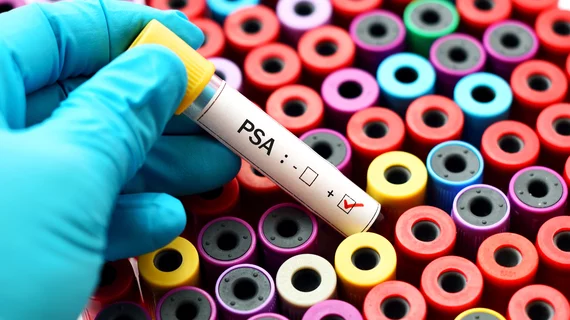PSMA-PET validates commonly used system measuring risk of prostate cancer recurrence
The European Association of Urology’s (EUA) risk assessment system that classifies men with prostate cancer based on their risk of recurrence has been validated via prostate-specific membrane antigen (PSMA) PET imaging, research recently confirmed.
The U.S. Food and Drug Administration’s recent approval of 68Ga-PSMA-11 to target PSMA during PET scans in men with prostate cancer enabled the researchers to fine tune their risk assessment categories. PSMA-PET scans, in turn, helped them to identify patients with early-stage, undetected cancer and distant metastatic disease.
“The European Association of Urology prostate cancer guidelines panel recommends risk groups for biochemical recurrence (BCR) of prostate cancer to identify men at high risk of progression or metastatic disease,” Justin Ferdinandus, MD, a nuclear medicine physician at University Hospital in Essen, Germany, and co-authors wrote. “The rapidly growing availability of PSMA-directed PET imaging will impact prostate cancer staging.”
For the study, the researchers evaluated PSMA-PET scans from almost 2,000 patients with prostate cancer, while increasing PSA levels were analyzed after patients had either undergone prostate surgery or radiotherapy. Patient history and characteristics, as well as disease spread observed on imaging were used to categorize patients by their risk (high or low) of cancer recurrence.
For the surgery group, PSA levels were lower than 2.0 ng/mL compared to the radiotherapy group that had PSA levels of at least 2 ng/mL. The scans of low-risk patients in the radiotherapy group revealed disease spread rates similar to those seen within the high-risk surgery group. Notably, many patients from the high-risk surgery group had no disease spread on their scans.
“We assume that the heterogeneous PSMA-PET disease extent reflected clinical reality, that is, the postradiotherapy or post-RP EAU BCR risk groups will likely present different outcomes despite sharing the same risk label,” said Wolfgang Fendler, MD, who is also a nuclear medicine physician at University Hospital in Essen. “To account for these differences, PSA level as well as RP- or radiotherapy-specific risk group nomenclature should be considered for risk assessment.”
You can view the detailed research in the Journal of Nuclear Medicine.

